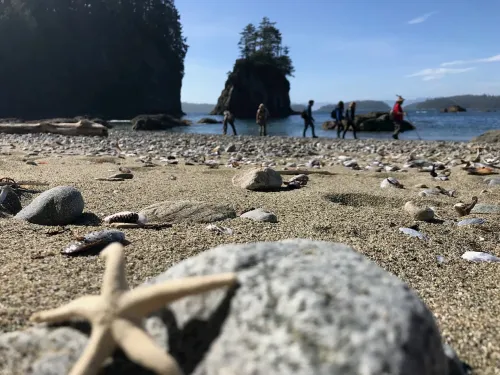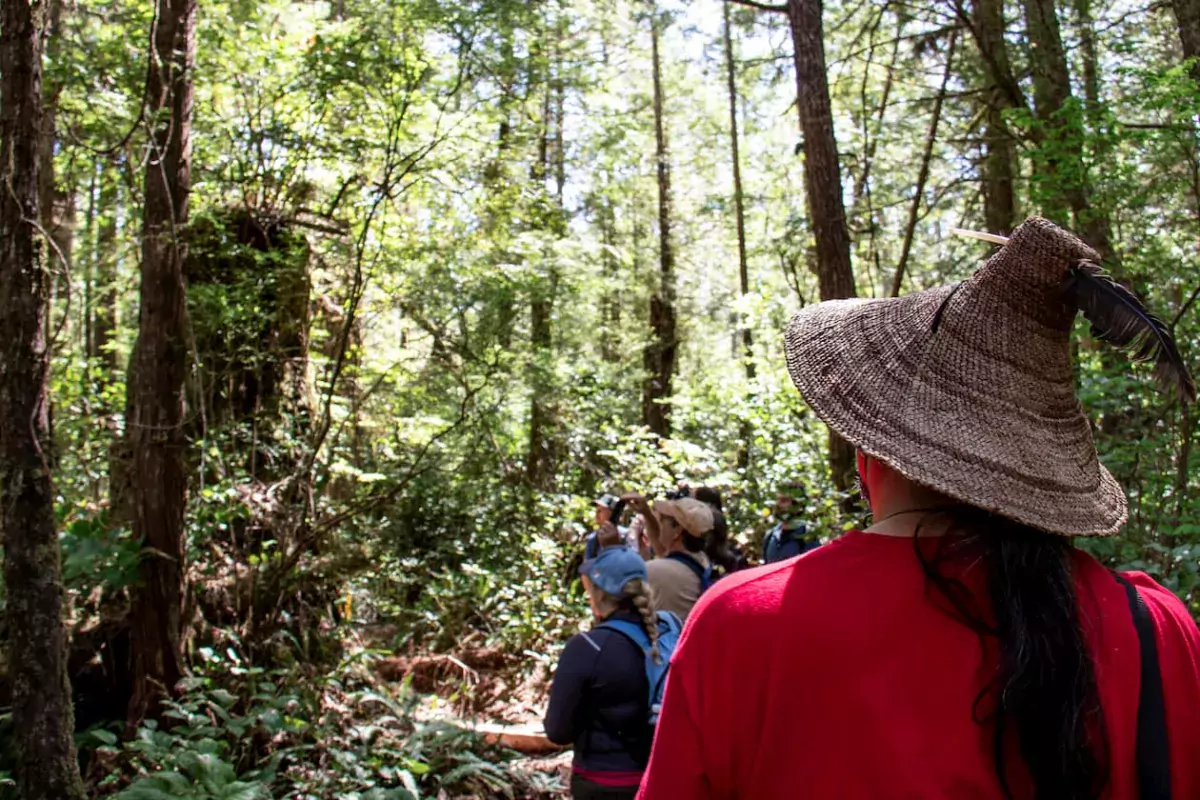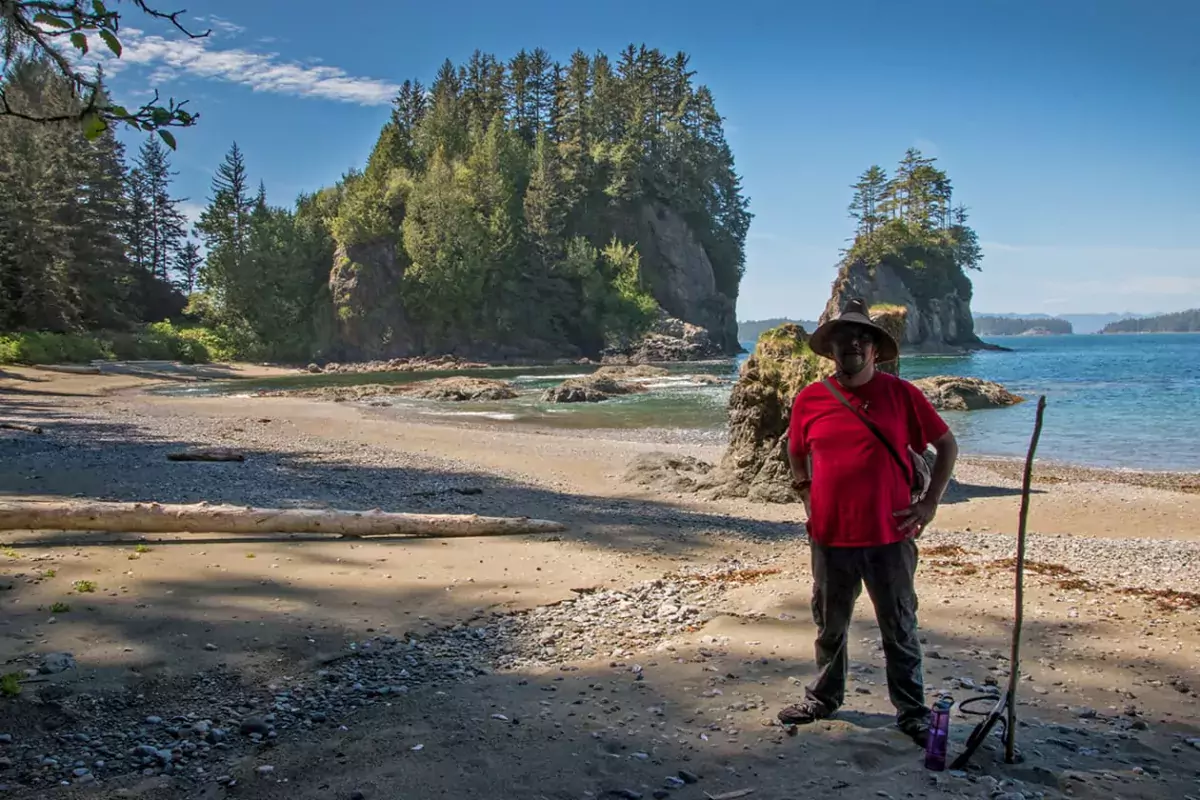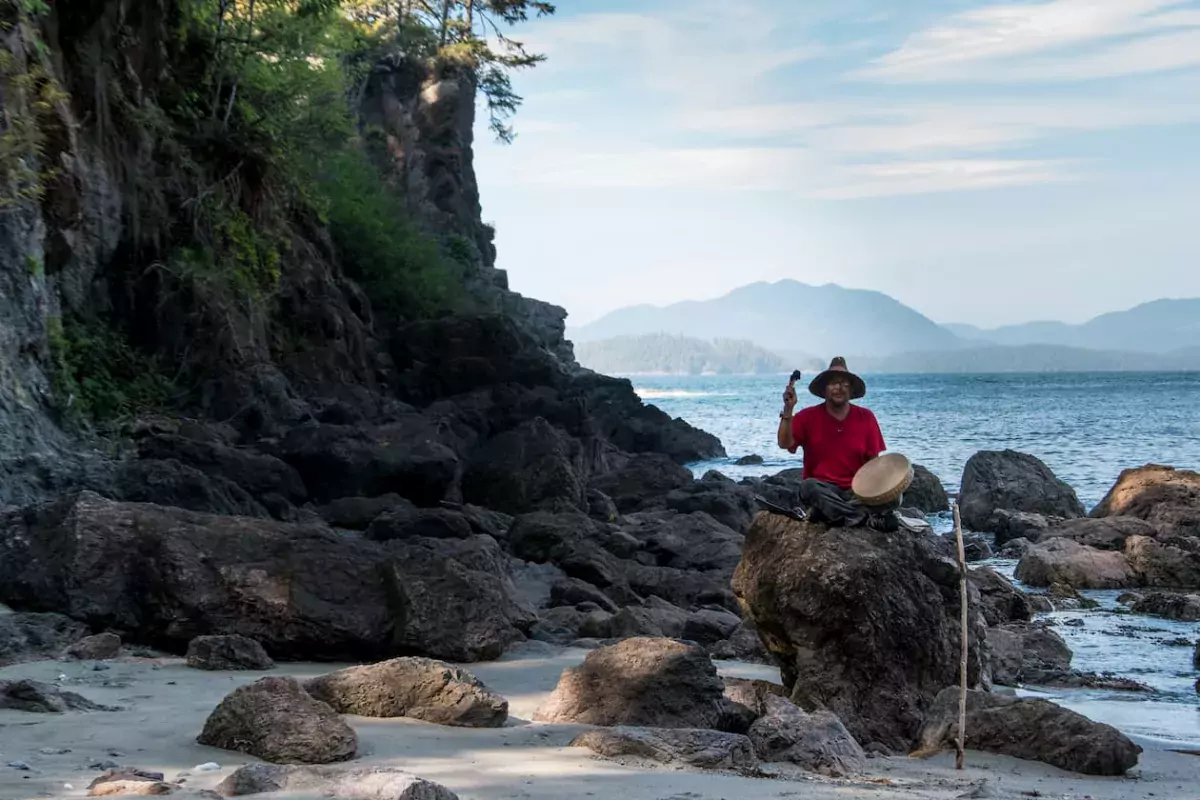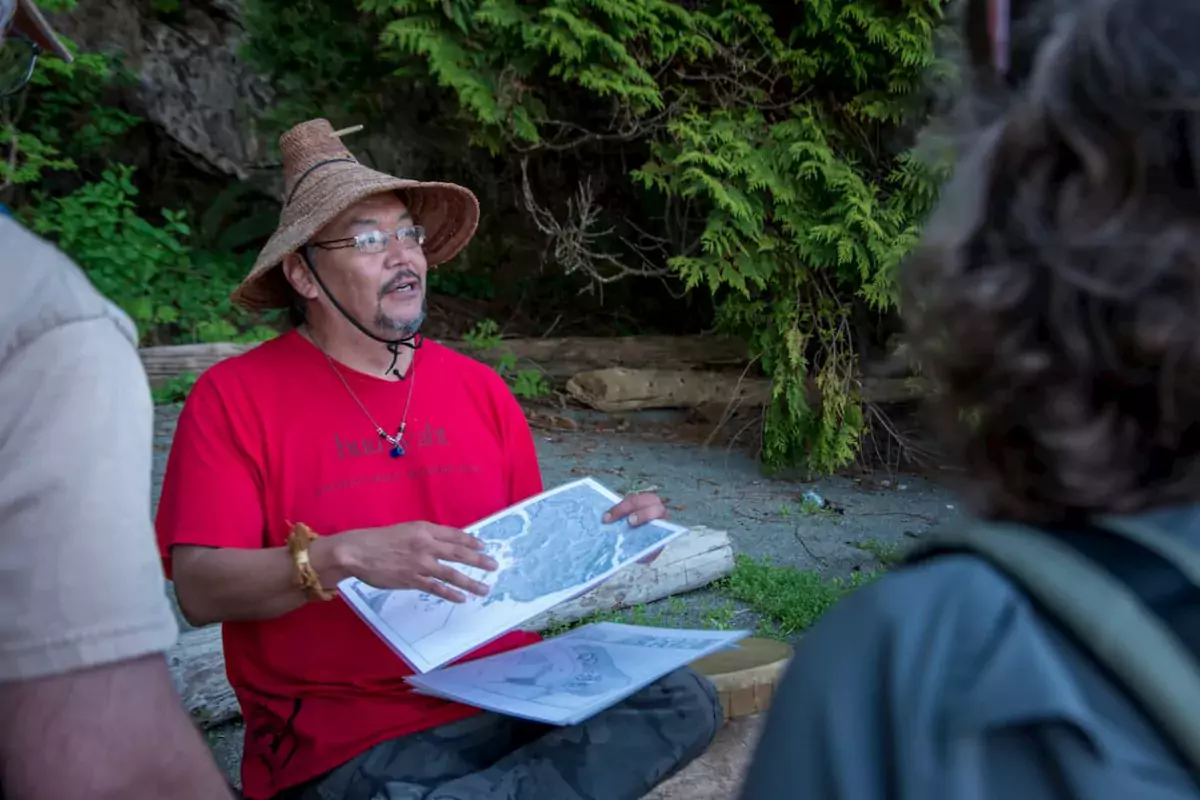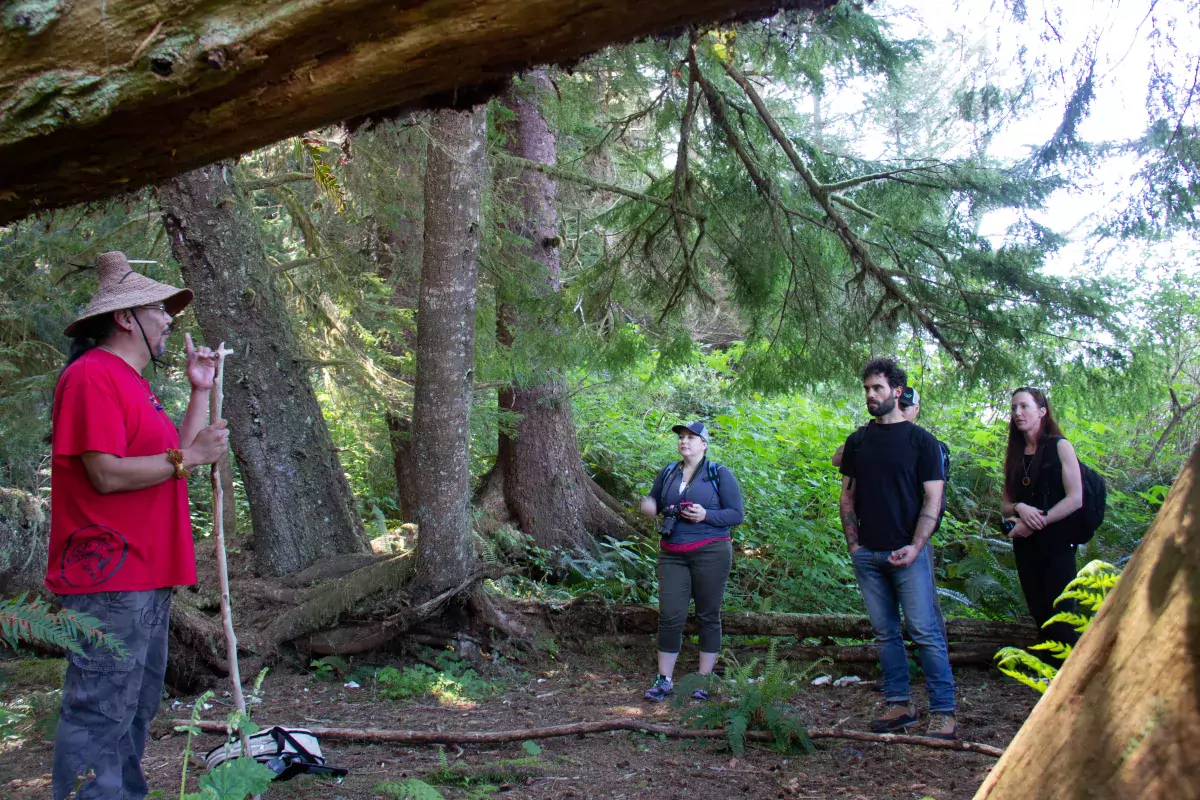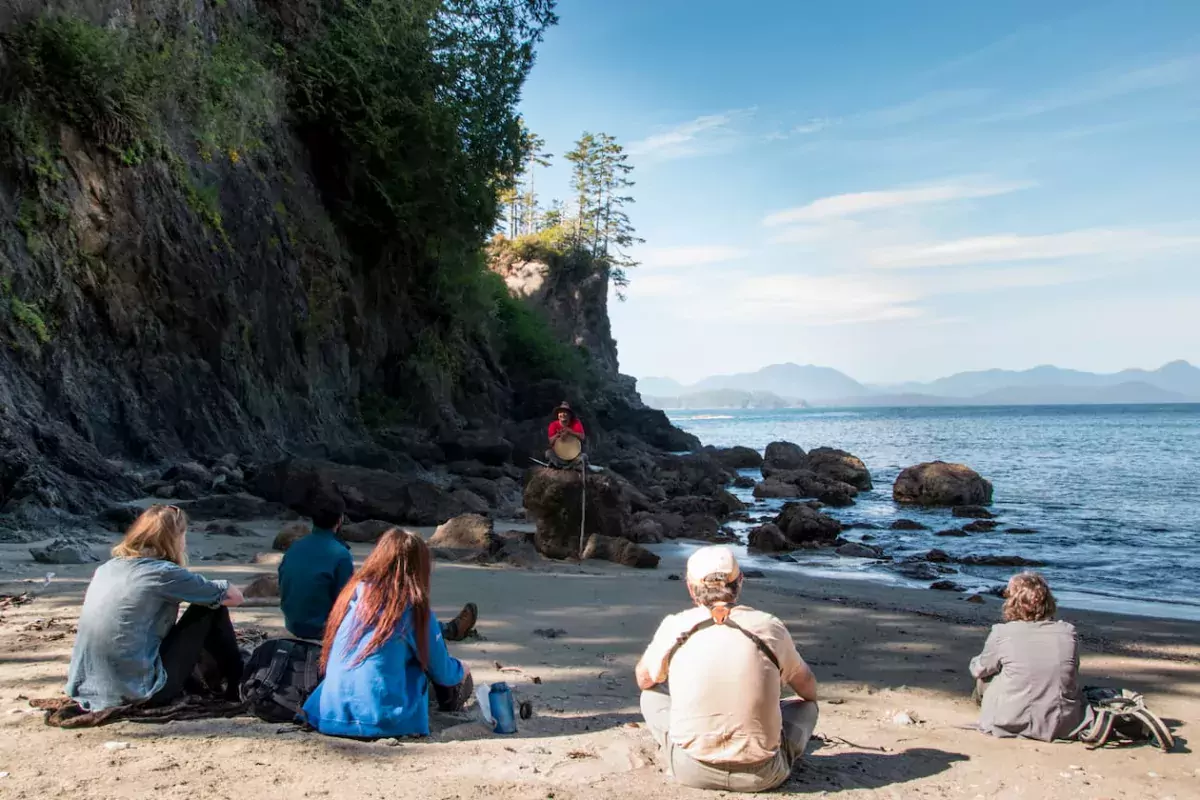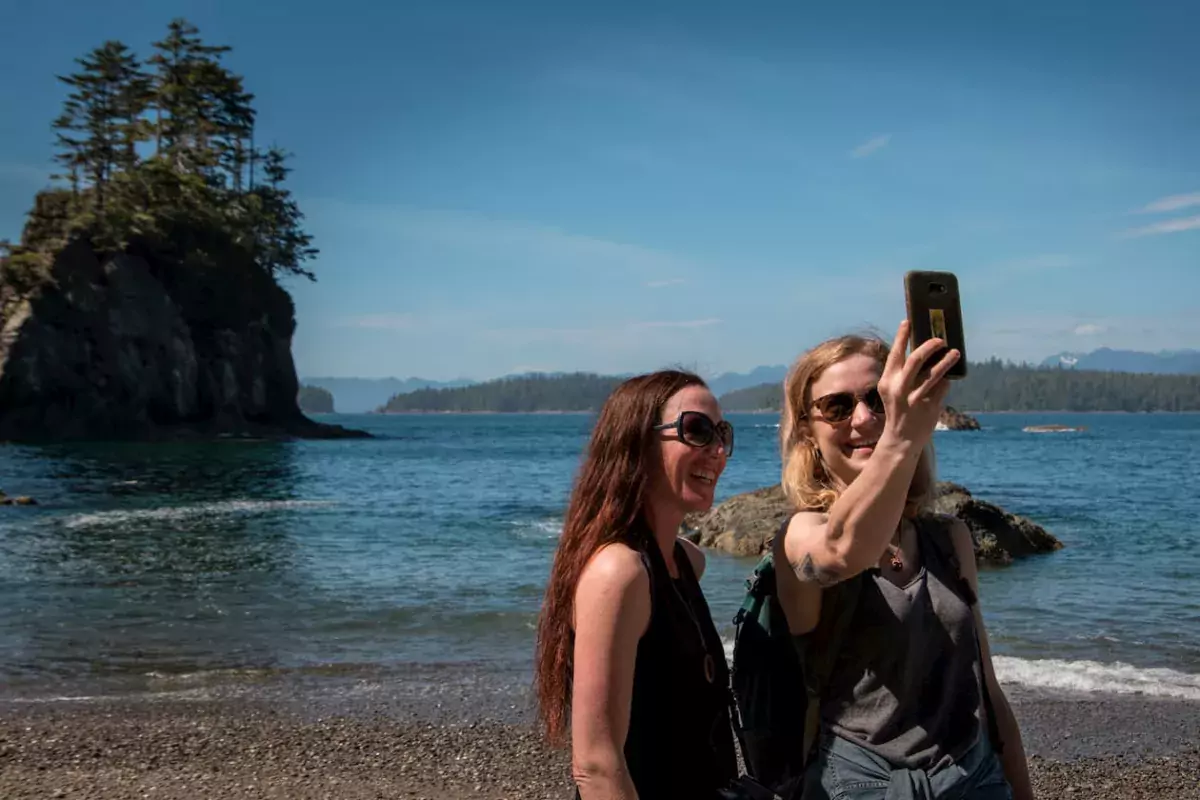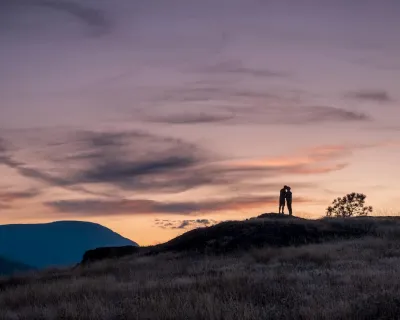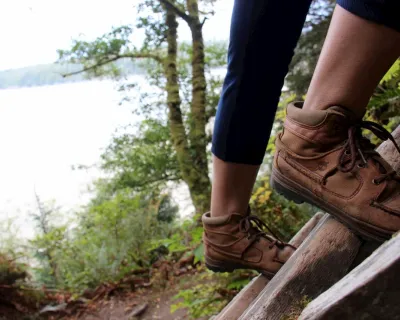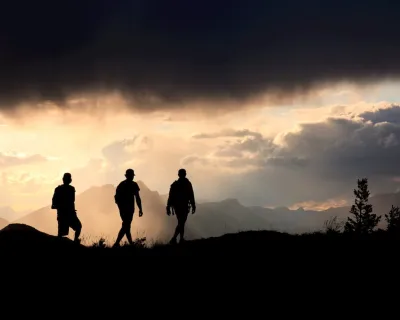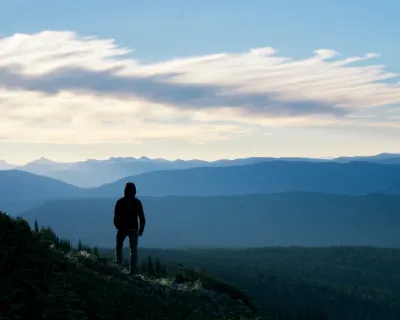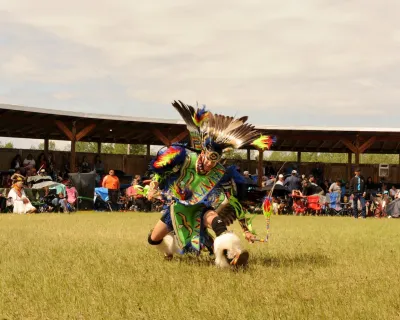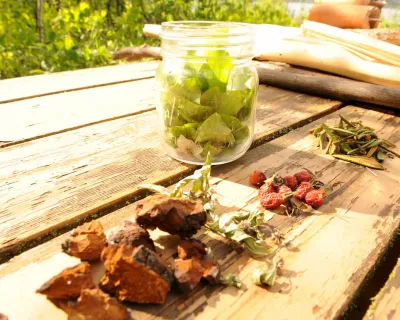Hiking into History #ExplorePortAlberni
REBECCA BOLLWITT aka Miss604
I thought it was the beauty of Kiixin that took my breath away. I thought it was the archeological remains of the 5,000-year-old site, the natural splendour of the shoreline and First Nations connection to the rainforest. But when Wisqii told us he was so proud to share the history of his people, I knew what this tour was truly about, the people.
#ExplorePortAlberni, start by checking into Port Alberni Tourism’s website.
The Feasting Song
Our Kiixin Tours experience began with meeting Wisqii (pronounced Wish-key) our guide for the day. He would lead us into the sensitive landscape - only accessible with a guide from the Huu-ay-aht First Nation. We gathered under a cedar awning and Wisqii picked up his drum to play The Feasting Song.
“I’ll sing many songs on the tour but we’ll start with food, which is a driver of the ancient world.”
Part nature walk, part history tour, Kiixin tour guide Wisqii stops at the base of a culturally modified tree and explains how the Huu-ay-aht people have had a symbiotic relationship with nature throughout their history.
Following him through the rainforest, over boardwalks flanked by fragrant swamp lanterns (aka skunk cabbage), through curtains of lichen, we stopped at the base of a culturally modified tree. That’s a tree whose bark has been peeled away to make Indigenous crafts such as baskets or other items. And our rainforest lesson begins. “In the natural world nothing is ever wasted or discarded. It always evolves into something else to assist the forest’s integrity.”
It’s an easy hike, with little elevation gain because the beach is just below us. “When you’re standing up on a hill in the forest and you can hear the ocean, well, that never gets old.”
We can smell the crisp sea air through the trees as Wisqii leads us down a flight of stairs and there in all its glory is Barkley Sound.
The rainforest walk leads to the beach, where Wisqii shares stories about the relationship between the ocean, the forest, and the Huu-ay-aht First Nation.
“I know this is very tough to compete with,” Wisqii says as we step onto the sand and the beauty of the cove lay before us. “I give my guests 10 to 15 minutes on their own to soak this up and then I’ll beat my drum to reconvene us.”
Dazzled by the natural beauty, crashing waves, towering cliffs covered in trees, the sand peppered with delicate coral, giant scallop and mussel shells, and teal water rolling over neon green sea gress, we scattered to explore.
The Canoe Song
After hiking and exploring the forest, sit on the sand for a story-telling song presented by Wisqii on the beach.
The beat of Wisqii’s drum echoes along the shore, calling us to sit on a log, and he plays the Canoe Song. “It’s a song about unity and togetherness; we move forward with the beat.” He show us photos, archeological renderings, and maps of the village site and nation territory that were once here.
He tells us how the massive ancient longhouses were made, how their precious artifacts were scooped up by museums and art collectors. He also talks about the Potlatch Ban, when the Canadian government of the day forbid First Nations ceremonies, from 1883 to 1951 and devastated their culture. “Drums and voices are tools of the ancient spirit. We are taking that back and reclaiming our identity.”
The Dancing Song
Wisqii takes a moment along the tour to share photos, maps, and artifacts that stretch back thousands of years.
We followed Wisqii from the beach and into the forest on a path outlined with sun-bleached oyster shells. We walked into what was once the centre of a longhouse, a post visible under an overgrown limb of another tree. “When we enter into a big house like this, we dance and celebrate.” He picks up his drum and plays the Dancing Song.
“For over 100 years we were dormant and quiet, not singing our songs. When we came back, we came back singing this song.” As we moved from one house site to another, Wisqii explains that Kiixin helps the Huu-ay-aht First Nation to share their story with the world. Even elements like three house posts arranged to line up with a constellation in the sky represent “where I have been, where I am now, and where I want to go”.
Look closely and you can spot the longhouse posts that have been reclaimed by the forest. Kiixin Tours will help you discover the past, and how its memory is all around you even among the trees.
We walk by the remains of the Whaling Chief’s house, where a trove of whale bones hides on the forest floor between blankets of moss and ferns. Back on the beach, Wisqii invites us to gather around to listen to his final story and song.
Suggested Readings:
Song of the 50 Warriors
After hiking and exploring the forest, sit on the sand for a story-telling song presented by Wisqii on the beach.
We hear a story about betrayal, a massacre, and how the Huu-ay-aht were driven out of their village by a warring tribe. Later they would reclaim their land, during a daylight surge led by the warriors who sang this song: “It’s my house, I’m coming to reclaim my house.” It’s a song of resilience - through natural disasters, warfare, and colonization.
I swear the waves stop making sounds - Wisqii’s storytelling was so captivating. Overwhelmed by the setting and stories, I can barely bring myself to move from the piece of driftwood I sat on during his final song.
“The greatest gifts we have are from the natural world,” Wisqii had said during our journey. I then knew that the greatest gift we were given that day was the honour of hearing him speak about the past, present, and future of his people.
When You Go
Want to hike to Kiixin? Learn more here.
Search #ExplorePortAlberni for more inspiration. Be sure to tag #ExplorePortAlberni while exploring the region as you could be featured on our social media channels!
Looking to get the most out of your trip to Kiixin? Check out our one-day itinerary.
Start planning your adventures in Port Alberni at Alberni Valley Tourism
Start exploring your Port Alberni region options with Destination BC
Find out more at the City of Port Alberni’s website
Like Our Facebook Page
